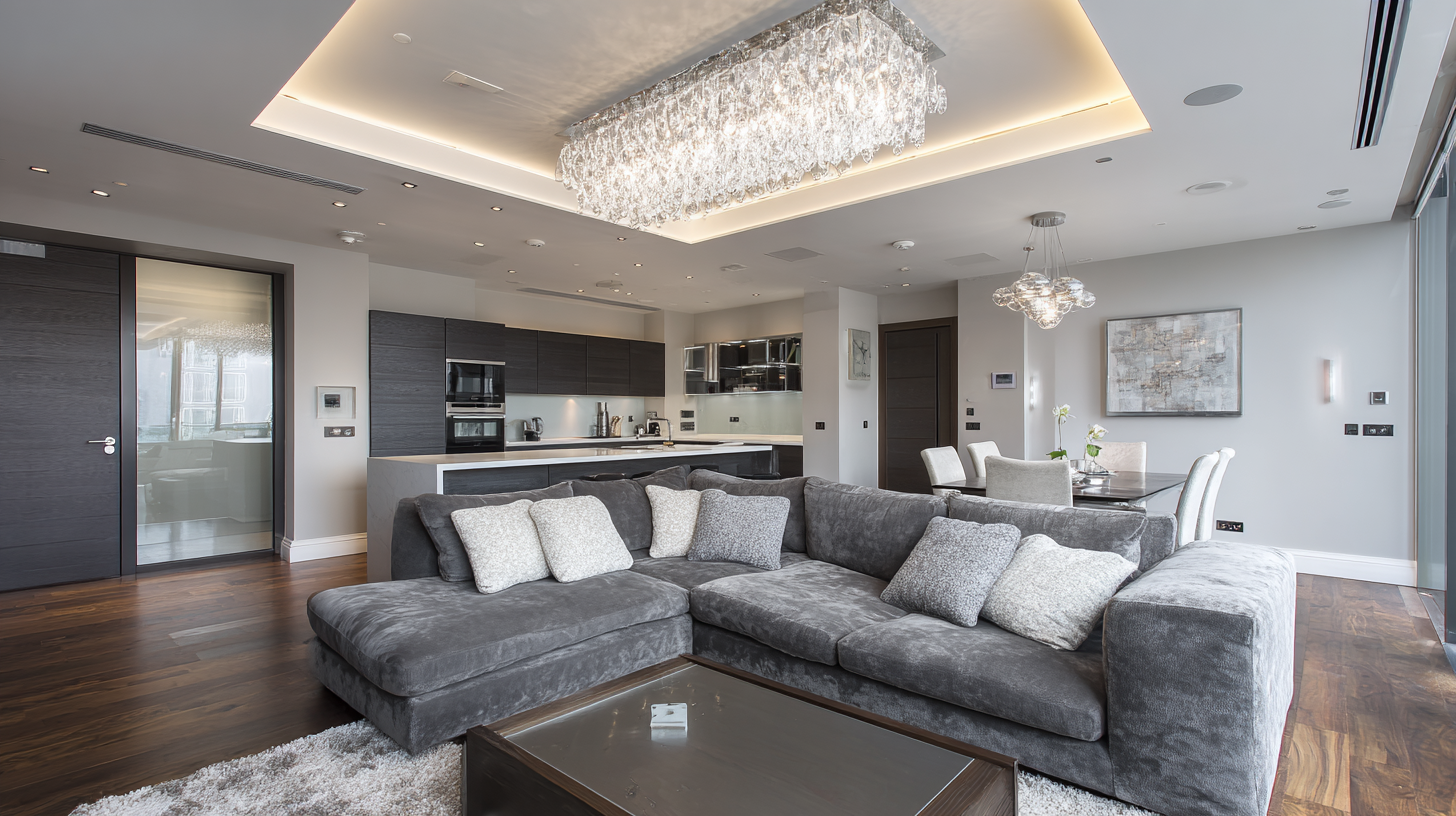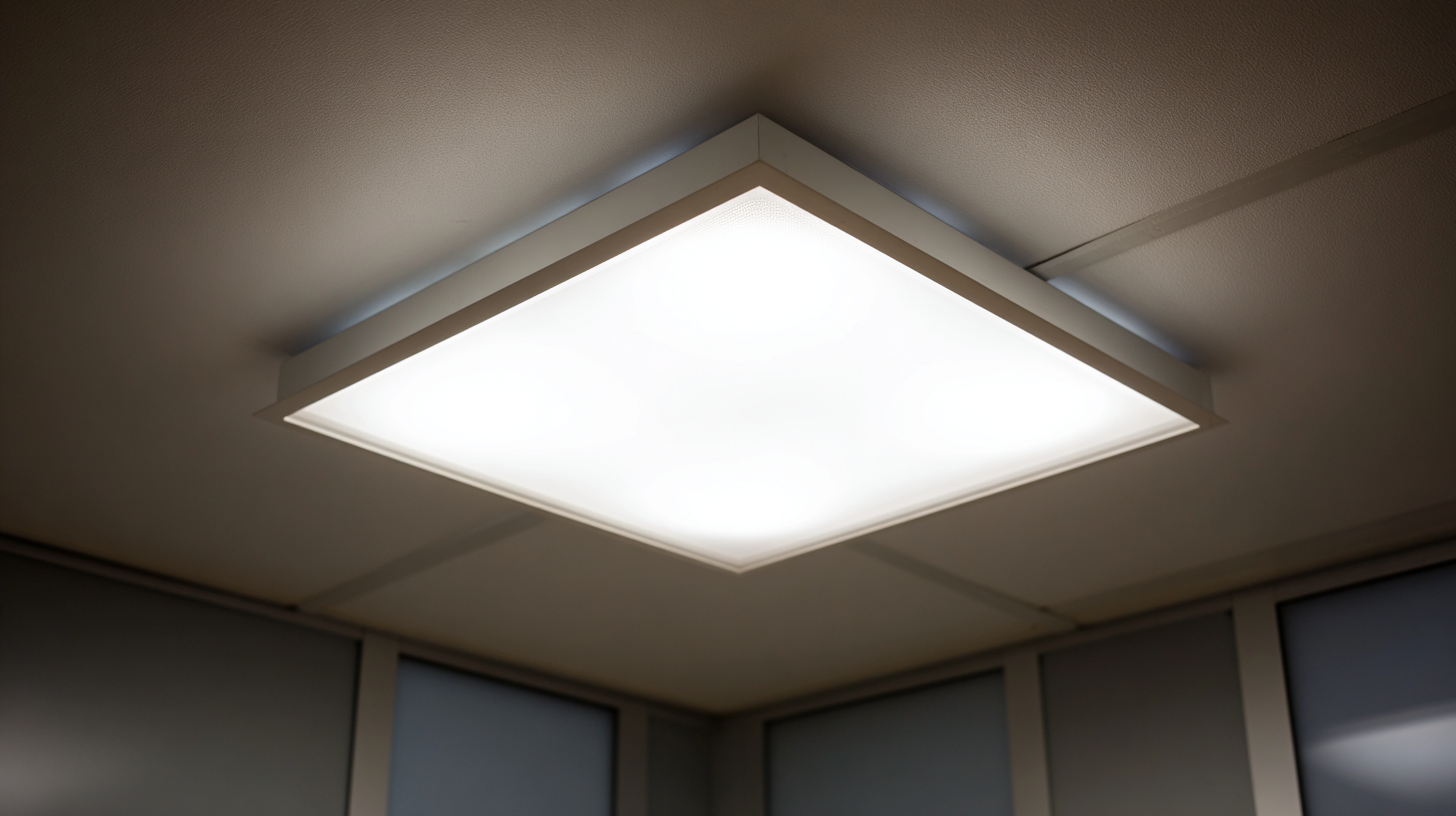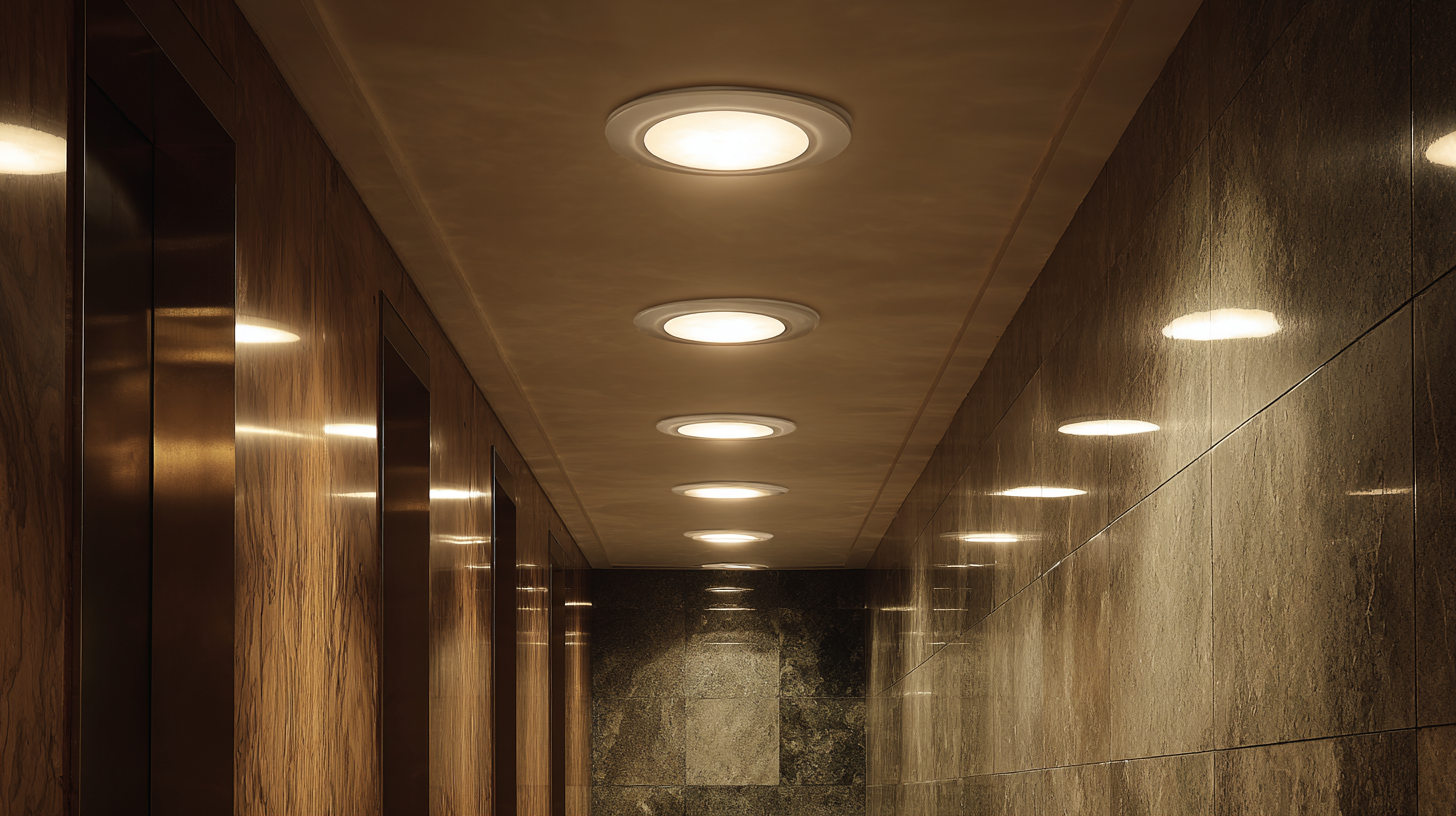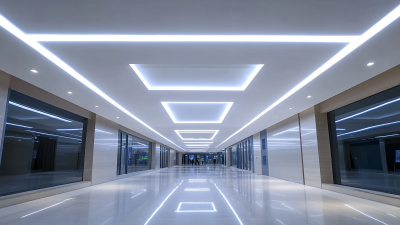Edison LED Lighting
Projects
Essential Guide to Choosing the Perfect LED Ceiling Lights for Your Home
In recent years, LED ceiling lights have gained significant popularity due to their energy efficiency and versatility, making them a staple in modern home design.
 According to a report from the U.S. Department of Energy, LED lighting installations have increased by over 80% since 2010, showcasing a shift towards more sustainable lighting solutions.
According to a report from the U.S. Department of Energy, LED lighting installations have increased by over 80% since 2010, showcasing a shift towards more sustainable lighting solutions.
Furthermore, a study by the National Electrical Manufacturers Association indicates that LED lights consume about 75% less energy than traditional incandescent bulbs, offering homeowners substantial savings on electricity bills.
As we delve into the essential guide for choosing the perfect LED ceiling lights for your home, it’s crucial to understand the nuances of various options available, ensuring that your selection not only complements your home’s aesthetic but also aligns with your energy conservation goals.
Understanding the Benefits of LED Ceiling Lights for Energy Efficiency Up to 80% Savings
LED ceiling lights are revolutionizing the way we illuminate our homes, combining style, functionality, and incredible energy efficiency. With the capacity to save up to 80% on energy costs, LED lighting is not only environmentally friendly but also financially beneficial. As more households recognize the impact of their energy consumption, the shift towards LED technology has become increasingly prominent. Unlike traditional incandescent bulbs, LED lights boast a lifespan that is up to twenty-five times longer, significantly reducing the need for frequent replacements and contributing to a more sustainable lifestyle.
The benefits of LED ceiling lights extend beyond just savings on energy bills; they also enhance the overall quality of light in residential spaces. Recent guidelines highlight the advantages of LED lighting controls, which allow for even greater energy savings by optimizing lighting usage throughout the day. This is crucial as nearly 20% of electricity consumed worldwide is attributed to lighting. By choosing the right LED ceiling lights for your home, you’re not only making an aesthetic choice but also promoting an eco-friendly environment that aligns with modern sustainability goals.

Key Factors to Consider When Choosing the Right LED Ceiling Lights for Your Space
When selecting the right LED ceiling lights for your space, several key factors must be considered to ensure you make an informed choice. The recent trend in the LED emergency ceiling light market indicates robust growth and diversification, with a wide range of models available, including standard LED lights and smart variants. According to industry reports, the indoor installation segment is particularly noteworthy, as it encompasses both residential and commercial spaces. Making the right decision hinges on understanding your unique space requirements and how different types of LED lights can meet those needs.
Battery types also play a crucial role in the functionality of LED ceiling lights, with options like nickel-cadmium (NICD) and nickel-metal hydride (NIMH) providing different benefits for performance and longevity. Installation type is another important consideration; for instance, lights designated for indoor use can offer varied brightness levels and energy efficiency that cater specifically to the ambiance you desire. For commercial settings, incorporating LED lights that allow for easy integration with smart systems can enhance energy management and safety, identifying the precise features that match your operational needs will ensure that you choose the perfect lighting solution for your space.
Essential Guide to Choosing the Perfect LED Ceiling Lights for Your Home
| Feature | Description | Recommendation |
|---|---|---|
| Brightness (Lumens) | The amount of light produced by the fixture. | Choose based on room size: 1000-2000 for small rooms, 3000+ for larger areas. |
| Color Temperature | Measured in Kelvin (K), affects the mood and look of the room. | 3000K for warm light, 5000K for cool, daylight effect. |
| Design Style | The aesthetic of the ceiling light, which should match your decor. | Select fixtures that complement your home's overall style. |
| Energy Efficiency | How much energy the light consumes relative to its output. | Look for ENERGY STAR rated products for better efficiency. |
| Dimming Capability | Ability to adjust brightness levels, often needs compatible dimmer switches. | Consider if you want to create different moods in your space. |
| Mounting Type | How the light is installed - flush mount, pendant, etc. | Choose based on ceiling height and room factors. |
| Lifespan | Expected duration before needing replacement. | LEDs often last 15,000 - 50,000 hours. |
Exploring Different Styles and Designs of LED Ceiling Lights to Enhance Your Home Aesthetics
When it comes to enhancing the aesthetics of your home, LED ceiling lights offer a perfect blend of functionality and style. These modern lighting solutions come in a variety of designs, allowing homeowners to express their unique tastes while illuminating their spaces. From the sleek lines of minimalistic fixtures to the intricate patterns of vintage-inspired designs, LED ceiling lights can complement any interior style, be it contemporary, rustic, or eclectic.

One of the most popular styles is the flush mount ceiling light, which provides a clean, unobtrusive look for low ceilings. These fixtures can effectively brighten a room without overwhelming it. For those seeking a statement piece, chandelier-style LED lights can add a touch of elegance and grandeur, becoming a focal point in dining rooms or living spaces. Additionally, pendant lights offer flexible design options, as they can be hung at varying heights to create visual layers and enhance the overall décor. By thoughtfully selecting the right LED ceiling lights, you can significantly transform your home’s atmosphere and aesthetic appeal.
The Importance of Color Temperature and Lumens in LED Ceiling Light Selection for Optimal Ambiance
When selecting the perfect LED ceiling lights for your home, understanding color temperature and lumens is crucial for creating the right ambiance. Color temperature, measured in Kelvin, indicates the warmth or coolness of light. A lower Kelvin (2700K-3000K) delivers a warm, cozy glow ideal for living spaces, while a higher Kelvin (4000K-5000K) provides a more vibrant, cooler light suitable for work areas or kitchens.
Lumens, on the other hand, determine the brightness of the light fixture. For a well-lit room, consider the purpose of the space: living rooms and bedrooms typically need around 1500-3000 lumens, while kitchens or bathrooms may require 4000 lumens or more.
**Tips:** When shopping for LED ceiling lights, always check the lumens rating to ensure adequate brightness for your needs. Experiment with different color temperatures in rooms to see which ambiance you prefer; a dimmable option can also offer versatility. Finally, consider energy-efficient styles that not only save electricity but also provide longer-lasting illumination for your home.
Comparison of Color Temperature and Lumens for LED Ceiling Lights
This chart illustrates the brightness levels in lumens for various color temperatures of LED ceiling lights, helping you understand the optimal selection for your home's ambiance.
Installation Tips and Maintenance Best Practices for Long-lasting LED Ceiling Lights
When installing LED ceiling lights, attention to detail is crucial for safety and efficiency. According to a report by the Department of Energy, LED lighting is about 75% more energy-efficient than traditional incandescent bulbs, and proper installation can maximize these benefits. Begin by ensuring that the ceiling structure can support the weight of the fixtures. Use appropriate electrical boxes rated for ceiling fixtures to avoid fire hazards. It’s also vital to read the manufacturer's instructions carefully, as LED lights often come with specific installation guidelines that can significantly affect their performance and longevity.
Maintenance of LED ceiling lights is equally important for ensuring their life span. A study from the Lighting Research Center indicates that the average life expectancy of LED lights can range from 15,000 to 50,000 hours, depending on the quality of the product and usage conditions. To maintain optimal performance, clean the fixtures regularly to remove dust and debris that can block light output. Additionally, keep an eye on the driver and any dimming mechanisms, as these components can wear over time. Regularly check for any flickering or color degradation, as addressing these issues early can preserve the quality of light and energy efficiency.
Related Posts
-

Challenges in Sourcing Quality Led Ceiling Lights for Your Business
-

Exploring Innovative Alternatives to Traditional Lighting: The Rise of LED Ceiling Lights
-

Unlocking the Power of Track Lights for Effective Product Displays
-

Ways to Choose the Best Outdoor Led Lights for Your Business Needs
-

Exploring the Efficiency of Linear Lighting Solutions Against Traditional Alternatives
-

Envisioning Tomorrow: Innovations in LED Lighting Solutions for Global Trade
